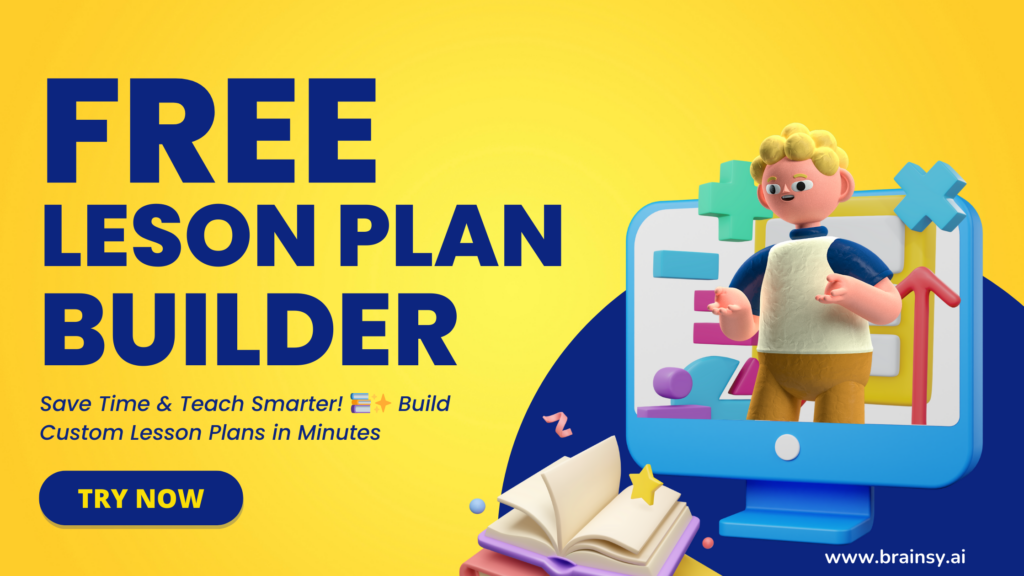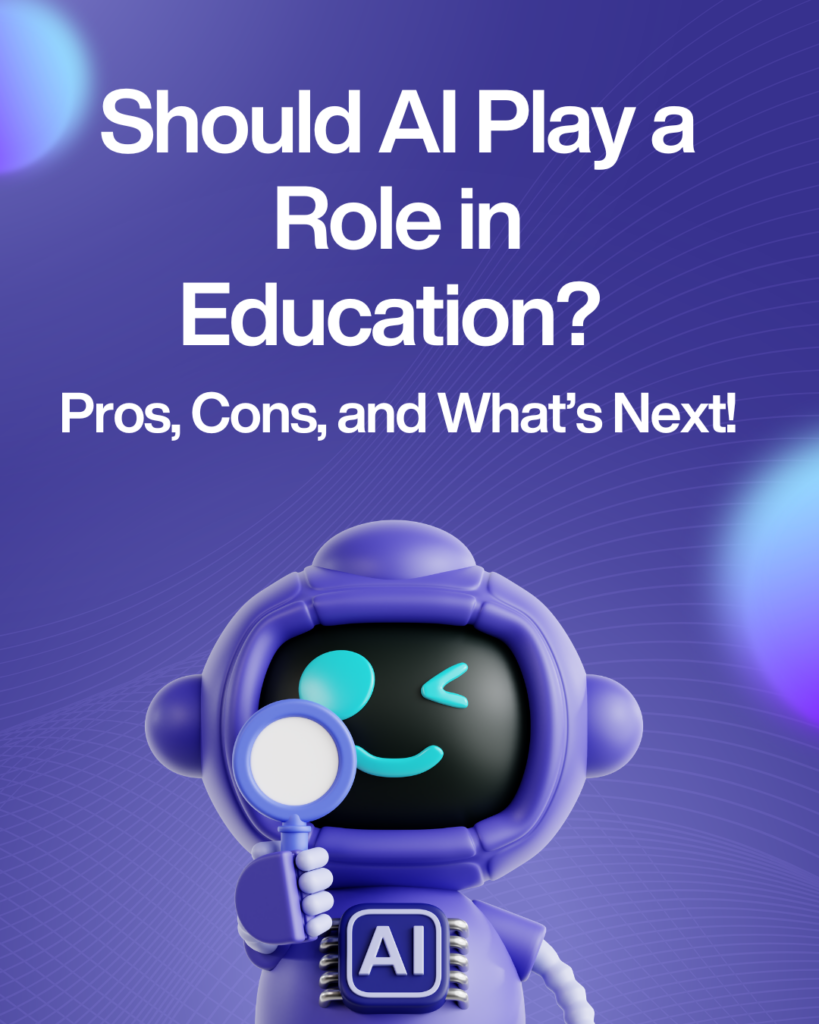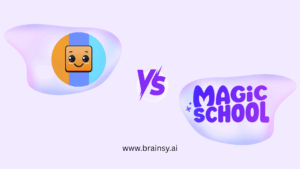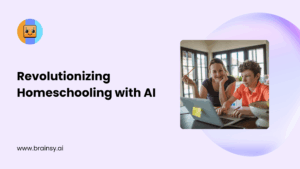In today’s rapidly evolving educational landscape, Artificial Intelligence (AI) is making a significant impact. As educators and learners, we are witnessing a shift in how knowledge is imparted and acquired. The integration of artificial intelligence for students is not just a trend but a transformative movement that is reshaping the way we approach teaching and learning. This article explores what is artificial intelligence in education and how it’s revolutionizing our classrooms.
AI technology offers a novel way to address some of the long-standing challenges in education. By leveraging data and machine learning, AI helps educators personalize learning experiences, thereby catering to each student’s unique needs and learning pace. From smart classrooms equipped with interactive tools to adaptive learning platforms, AI and students are at the forefront of a more engaging and effective educational experience.
As we delve into this exciting intersection of technology and learning, it is crucial to understand the multifaceted role AI plays in education. This exploration will help us appreciate the benefits it brings to both teachers and students, while also preparing us for the innovations that lie ahead, including the growing influence of generative AI in the classroom.
The Role of Artificial Intelligence in Education
AI’s role in modern learning environments is multifaceted, enabling a more tailored and interactive educational experience. By analyzing vast amounts of data, AI systems can identify patterns and insights that lead to more effective teaching strategies and learning outcomes. This intelligent analysis is changing how educators understand student performance and progress, showcasing how AI is changing education.
In addition to data analysis, AI enables the creation of smart classrooms that offer interactive and immersive learning experiences. These AI classroom environments use AI-driven tools like virtual reality, augmented reality, and interactive whiteboards to make learning more engaging. By simulating real-world scenarios, these tools help students grasp complex concepts more easily and retain information longer.
Furthermore, AI facilitates communication and collaboration among students and educators. Through AI-powered platforms, learners can engage in discussions and collaborative projects irrespective of geographical boundaries. This connectivity enriches the learning experience, making education more inclusive and accessible, highlighting the importance of AI applications in education.
Benefits of AI-driven Teaching
AI offers numerous benefits to both teachers and students, enhancing the overall educational experience. For teachers, AI acts as an invaluable assistant, helping them manage administrative tasks more efficiently. By automating grading and attendance tracking, AI frees up valuable time that educators can spend on lesson planning, student interaction, and professional development.
For students, AI personalizes the learning journey. Adaptive learning technologies adjust the difficulty of tasks based on individual performance, ensuring that students remain challenged but not overwhelmed. This personalized approach keeps students engaged and motivated, ultimately leading to better learning outcomes and showcasing the AI benefits in education.
Moreover, AI provides immediate feedback to students, allowing them to understand their strengths and areas for improvement instantly. This instant feedback loop is crucial for fostering a growth mindset, where students are encouraged to learn from their mistakes and continuously improve. The use of AI in schools also promotes critical thinking and social and emotional learning, preparing students for the challenges of the future workforce.
Exploring Smart Classrooms: The Future of Learning
Smart classrooms represent the future of learning, where traditional educational models are augmented by cutting-edge technology. These classrooms are equipped with AI-driven tools that transform passive learning into an active, immersive experience. Interactive displays, digital whiteboards, and virtual reality headsets are just a few examples of the AI technology in education that is revolutionizing how we teach and learn.
In a smart classroom, AI can monitor student engagement levels and provide insights to educators about how different teaching methods impact learning. This data-driven approach allows teachers to adjust their strategies in real time, ensuring that each student receives the support they need to succeed.
The integration of smart devices also facilitates collaborative learning. Students can work together on projects using cloud-based platforms, sharing resources and ideas seamlessly. This collaborative environment not only enhances learning but also prepares students for the modern workforce, where teamwork and digital literacy are essential skills.
How is AI Being Used in Education?
Educators have a plethora of AI tools at their disposal, each designed to enhance the classroom experience. These tools range from AI-driven analytics platforms that track student progress to virtual teaching assistants that provide additional support during lessons, demonstrating how AI can help with education.
One popular tool is the intelligent tutoring system, which offers personalized instruction and practice problems tailored to each student’s learning level. These systems use AI algorithms to adapt to the learner’s pace, ensuring that they are neither bored nor overwhelmed.
Another innovative AI tool is the virtual classroom assistant. This assistant can automate routine tasks like setting reminders for assignments, scheduling meetings, and even answering frequently asked questions. By handling these administrative duties, the AI assistant allows teachers to focus on delivering quality education.
Generative AI tools, such as ChatGPT, are also making their way into educational settings, offering new possibilities for content creation, language learning, and creative writing exercises. These tools are reshaping how AI is changing education by providing students with interactive and dynamic learning experiences.
Personalized Learning with AI: Tailoring Education to Individual Needs
Personalized learning is a cornerstone of AI in education, offering tailored educational experiences that meet individual student needs. Through AI, we can analyze data from various sources, such as assessments and learning activities, to create a customized learning path for each student.
AI-powered platforms assess each student’s strengths, weaknesses, and learning preferences, adapting content accordingly. This personalized approach ensures that students receive the right level of challenge, promoting deeper understanding and retention of knowledge.
Moreover, personalized learning with AI fosters a more inclusive educational environment. Students with different learning abilities and styles can benefit from customized resources and support, making education more equitable and accessible for all. This aspect of AI technology in education is crucial for promoting educational equity and ensuring that every student has the opportunity to succeed.
Classroom Automation: Streamlining Administrative Tasks
Classroom automation is a game-changer in education, significantly reducing the administrative burden on teachers. By automating routine tasks like grading, attendance tracking, and scheduling, AI allows educators to devote more time to teaching and mentoring students.
Automated grading systems, for instance, can quickly evaluate multiple-choice and short-answer questions, providing instant feedback to students. This efficiency not only saves time but also maintains consistency and fairness in the evaluation process.
In addition to grading, AI can streamline communication between teachers, students, and parents. Automated messaging systems can send reminders about assignments, upcoming events, and academic progress, ensuring that everyone stays informed and engaged. This level of automation demonstrates how AI helps education by freeing up valuable time for more meaningful human interaction.
Time-Saving Tools for Teachers: How AI Reduces Workload
AI offers a range of time-saving tools that alleviate the workload of educators, allowing them to focus on what matters most: teaching. These tools automate repetitive tasks, optimize lesson planning, and facilitate classroom management, showcasing how AI can help with education on an administrative level.
One effective tool is the AI-driven lesson planning assistant, which suggests resources and activities based on curriculum standards and student needs. By providing curated content and insights, this tool helps teachers create engaging and effective lesson plans more efficiently.
Additionally, AI-powered classroom management systems help teachers monitor and manage student behavior, attendance, and participation. By providing real-time data and analytics, these systems enable educators to address issues promptly and maintain a conducive learning environment. These tools are essential in demonstrating how AI is changing education by empowering teachers with data-driven insights.
Educational Technology Trends Shaping the Future of Learning
The field of educational technology is constantly evolving, with several trends shaping the future of learning. AI, as a central component of these trends, is driving innovation and transforming traditional educational paradigms.
One prominent trend is the rise of gamification in education. By incorporating game-like elements into learning activities, educators can increase student engagement and motivation. AI-driven platforms enhance this trend by providing personalized challenges and rewards based on student performance.
Another significant trend is the growth of online and blended learning models. AI facilitates these models by offering adaptive learning experiences that cater to diverse student needs. As a result, education becomes more flexible and accessible, reaching learners across the globe through virtual learning platforms.
The integration of generative AI in curriculum development and content creation is also gaining traction. This technology can help create dynamic, up-to-date learning materials that adapt to the latest developments in various fields, ensuring that students are always learning relevant and current information.
Ethical Considerations of AI in Schools
While AI offers numerous benefits to education, it also raises important ethical considerations that must be addressed. As we integrate AI into schools, we must ensure that these technologies are used responsibly and ethically.
One key concern is data privacy. AI systems rely on vast amounts of data to function effectively, raising questions about how this information is collected, stored, and used. It is essential to implement robust data protection measures to safeguard student privacy and maintain trust. This aspect of AI policy in education is crucial for ensuring that the benefits of AI do not come at the cost of student privacy.
Moreover, we must consider the potential for bias in AI algorithms. These systems can inadvertently perpetuate existing biases if not carefully designed and monitored. Ensuring that AI tools are fair and unbiased is crucial to promoting equity and inclusivity in education.
The use of AI detection software to combat academic misconduct is another area where AI ethics come into play. While these tools can help maintain academic integrity, they also raise questions about student privacy and the balance between surveillance and trust in educational settings.
The Impact of AI on Teacher Workload and Student Engagement
AI has a profound impact on both teacher workload and student engagement. By automating administrative tasks, AI reduces the workload on teachers, allowing them to focus on more meaningful aspects of education, such as individualized instruction and student support.
For students, AI enhances engagement by providing interactive and personalized learning experiences. Adaptive learning platforms and smart classroom tools keep students motivated and invested in their education, leading to higher levels of participation and achievement.
The combination of reduced teacher workload and increased student engagement creates a more dynamic and effective learning environment. As educators, we must embrace these changes and leverage AI to create a better educational experience for all, while also recognizing the importance of maintaining a balance between AI-driven instruction and human interaction.
Conclusion: Embracing AI for a Better Learning Experience
As we conclude our exploration of AI in education, it is clear that embracing this technology can lead to a better learning experience for both teachers and students. AI offers innovative solutions to long-standing challenges, providing personalized, efficient, and engaging educational experiences.
By integrating AI into our classrooms, we can foster a more inclusive and equitable educational environment. As we move forward, it is crucial to remain mindful of ethical considerations and strive to use AI responsibly and effectively. The AI impact on education is undeniable, and its continued development promises to revolutionize how we teach and learn.
The question of whether AI should be used in schools is no longer a matter of if, but how. As we’ve seen, artificial intelligence in school settings can enhance learning outcomes, streamline administrative tasks, and provide personalized education at scale. However, it’s crucial to implement these technologies thoughtfully, with a focus on AI literacy for both educators and students.
As educators, parents, and learners, we must work together to embrace AI in education. By staying informed and open to innovation, we can harness the power of AI to transform our educational landscape. Let’s explore, adapt, and create a future where technology and learning go hand in hand, ensuring a brighter and more inclusive educational experience for all. The importance of AI in education cannot be overstated, and it’s up to us to shape its implementation for the benefit of future generations. By investing in professional development for educators and fostering a culture of continuous learning, we can ensure that AI becomes a powerful tool for educational advancement rather than a source of disruptio






